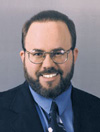The 1937-S Washington Quarter
Posted on 6/1/2003

This first installment will take a look at a unique entry within the long-running Washington quarters series.
Intended as a one-year-only circulating commemorative to mark the 1932 bicentennial of George Washington's birth, this coin type was continued once regular coinage resumed two years later. The Standing Liberty quarter had been plagued by die erosion problems that resulted in poor strikes and less-than-optimal die life. This fact, combined with the popularity of Washington as an American icon, prompted the Treasury Department to retire the Standing Liberty quarter before its statutory 25-year production had been achieved.
Ironically, the Washington quarter presented a number of its own technical challenges to the U.S. Mint. These problems in die relief and sharpness were addressed through a series of modified obverse and reverse hubs employed during 1934 and 1935. By 1936 it seemed that these obstacles were overcome, and the 1936 and later silver Washington quarters show fairly sharp impressions when struck from fresh working dies.
As proof of this technical achievement, the quarters dated 1937 typically are quite attractive when uncirculated. The Philadelphia and Denver Mints produced fairly substantial numbers of quarter dollars that year, making these issues common in both worn and mint state condition. The mint at San Francisco, however, struck just 1,652,000 pieces in 1937, one of the lowest mintages in the series. While there were enough collectors at the time saving uncirculated rolls that this issue will never be rare in mint state, finding an example in general circulation was tough from the outset, and even well -worn pieces are worth a premium over their silver value.
Aside from its scarcity, there is something else that sets the 1937-S quarter dollar apart from every other issue in this long-running series. For reasons now forgotten, the obverse rim of the 1937-S quarter was raised above the normal level. You say you've never noticed this? Well, don't feel bad, as it isn't really noticeable on uncirculated coins. Since most collectors of the Washington series don't bother with worn examples, it's easy to overlook this phenomenon. Still, the obverse rim of 1937-S quarters is clearly higher than on other dates, a fact that becomes quite apparent when examining heavily worn coins.
On all Washington quarters, the reverse typically wears more rapidly than the obverse. The inadequacy of the reverse rim in protecting this side from wear is a hallmark of the series. But on the 1937-S quarters this discrepancy is almost ludicrous. The typical coin of this date grading Good on its reverse will grade anywhere from Very Good to Fine on its obverse. One grading as low as About Good on its reverse will still show a complete obverse rim.
I became aware of this curious situation decades ago while collecting these coins from circulation, though I didn't know how to account for it at the time. A better understanding of the minting process has permitted me to conclude that this unique situation was the result of deliberate action at the mint. But which mint remains uncertain. Was the obverse rim strengthened at Philadelphia, where the dies are prepared, or at San Francisco, where these particular working dies were used? It's doubtful that an entirely new master die was prepared just for the 'S' Mint quarters, so this work was likely performed on the individual working dies. The small mintage of 1937-S quarters could have been achieved with as few as seven or eight obverse dies, though the actual number used is unknown.
Several questions remain: Why was this action taken only for dies sent to the San Francisco Mint? Was this the experimental group, while the Philadelphia and Denver Mint coins remained as a control group? Did this possible mint experiment account for the unusually small mintage of 1937-S quarters? Without any documentation, we'll never know.
David W. Lange's column USA Coin Album appears monthly in The Numismatist, the official publication of the American Numismatic Association.
Stay Informed
Want news like this delivered to your inbox once a month? Subscribe to the free NGC eNewsletter today!
